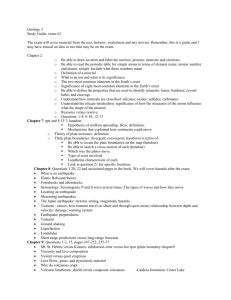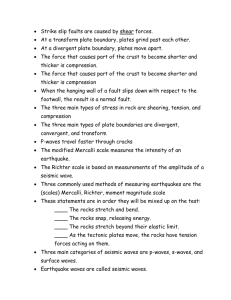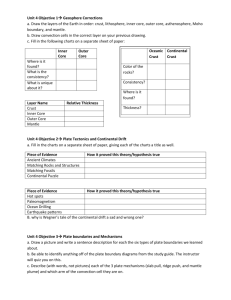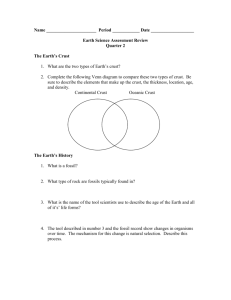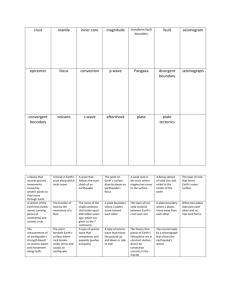Semester one TF review
advertisement
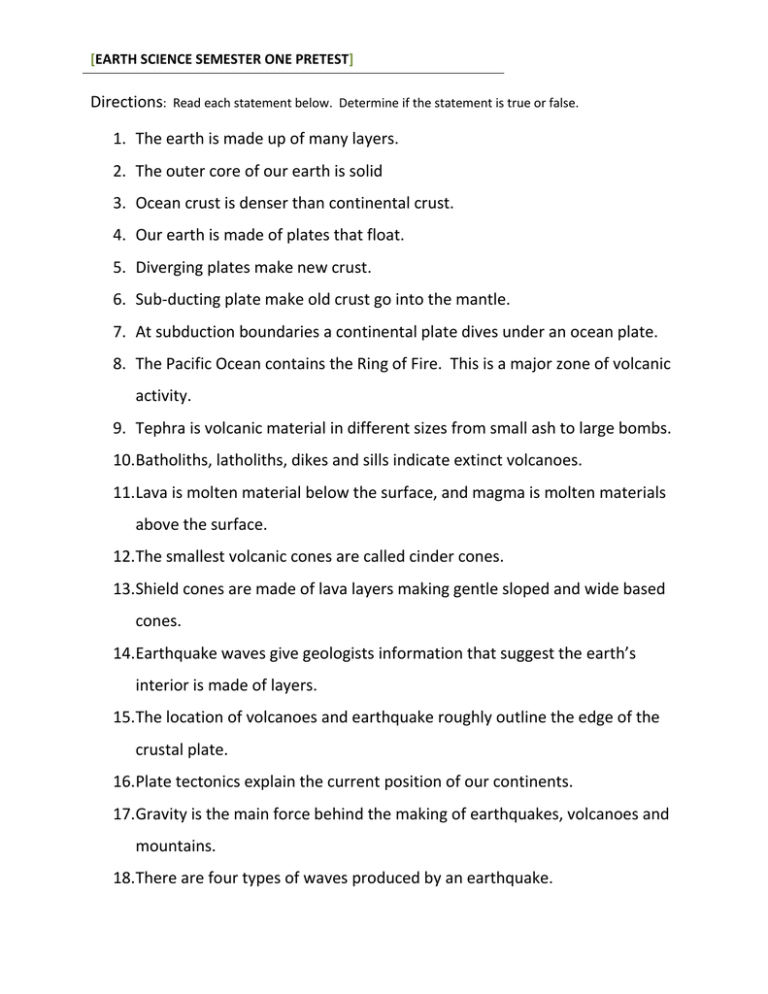
[EARTH SCIENCE SEMESTER ONE PRETEST] Directions: Read each statement below. Determine if the statement is true or false. 1. The earth is made up of many layers. 2. The outer core of our earth is solid 3. Ocean crust is denser than continental crust. 4. Our earth is made of plates that float. 5. Diverging plates make new crust. 6. Sub-ducting plate make old crust go into the mantle. 7. At subduction boundaries a continental plate dives under an ocean plate. 8. The Pacific Ocean contains the Ring of Fire. This is a major zone of volcanic activity. 9. Tephra is volcanic material in different sizes from small ash to large bombs. 10.Batholiths, latholiths, dikes and sills indicate extinct volcanoes. 11.Lava is molten material below the surface, and magma is molten materials above the surface. 12.The smallest volcanic cones are called cinder cones. 13.Shield cones are made of lava layers making gentle sloped and wide based cones. 14.Earthquake waves give geologists information that suggest the earth’s interior is made of layers. 15.The location of volcanoes and earthquake roughly outline the edge of the crustal plate. 16.Plate tectonics explain the current position of our continents. 17.Gravity is the main force behind the making of earthquakes, volcanoes and mountains. 18.There are four types of waves produced by an earthquake. [EARTH SCIENCE SEMESTER ONE PRETEST] 19.The P earthquake waves travel slower than S waves. 20.The S earthquake waves travel faster than P waves. 21.The center of the earthquake is called the epicenter. 22.As you go away from the center of the earthquake the waves lag time increases. 23.Mountains are constantly getting higher. 24.Mountains are made from the same forces as volcanoes and earthquakes. 25.A map used to show elevation is called a topographic map. 26.On a topographic map, contour lines are drawn through places that have different altitudes on a map. 27.When contour lines cross a stream the lines point toward where the stream begins. 28.As contour lines spread farther apart, the land becomes more flat. 29.Closed circular contour lines show hilltops. 30.Quartz is the least abundant mineral in the earth’s crust. 31.The best way to tell what a mineral is to look at its color. 32.Diamonds and graphite have different atomic structures because they are formed at the same depth in the earth’s crust. 33.Diamond is the hardest mineral we have found. 34.Strength, bend ability, shape and reflection are all properties of minerals. 35.A diamond has a metallic luster. 36.When we scratch a mineral with our finger nail and a small powder came off. This means the mineral is considered a hard mineral. 37.There are four main types of rocks. 38.Igneous rocks are made from other rocks. [EARTH SCIENCE SEMESTER ONE PRETEST] 39.Sedimentary rocks come directly from volcanoes. 40.Metamorphic rocks have layers because they undergo great pressure. 41.The weathering of rocks happens because of wind and water. 42.Sedimentary rocks are formed by lithification. 43.Erosion occurs on the earth’s surface when sediments are picked up and moved. 44.Mass is the amount of space an object takes up. 45.Density determines if an object will sink or float.
